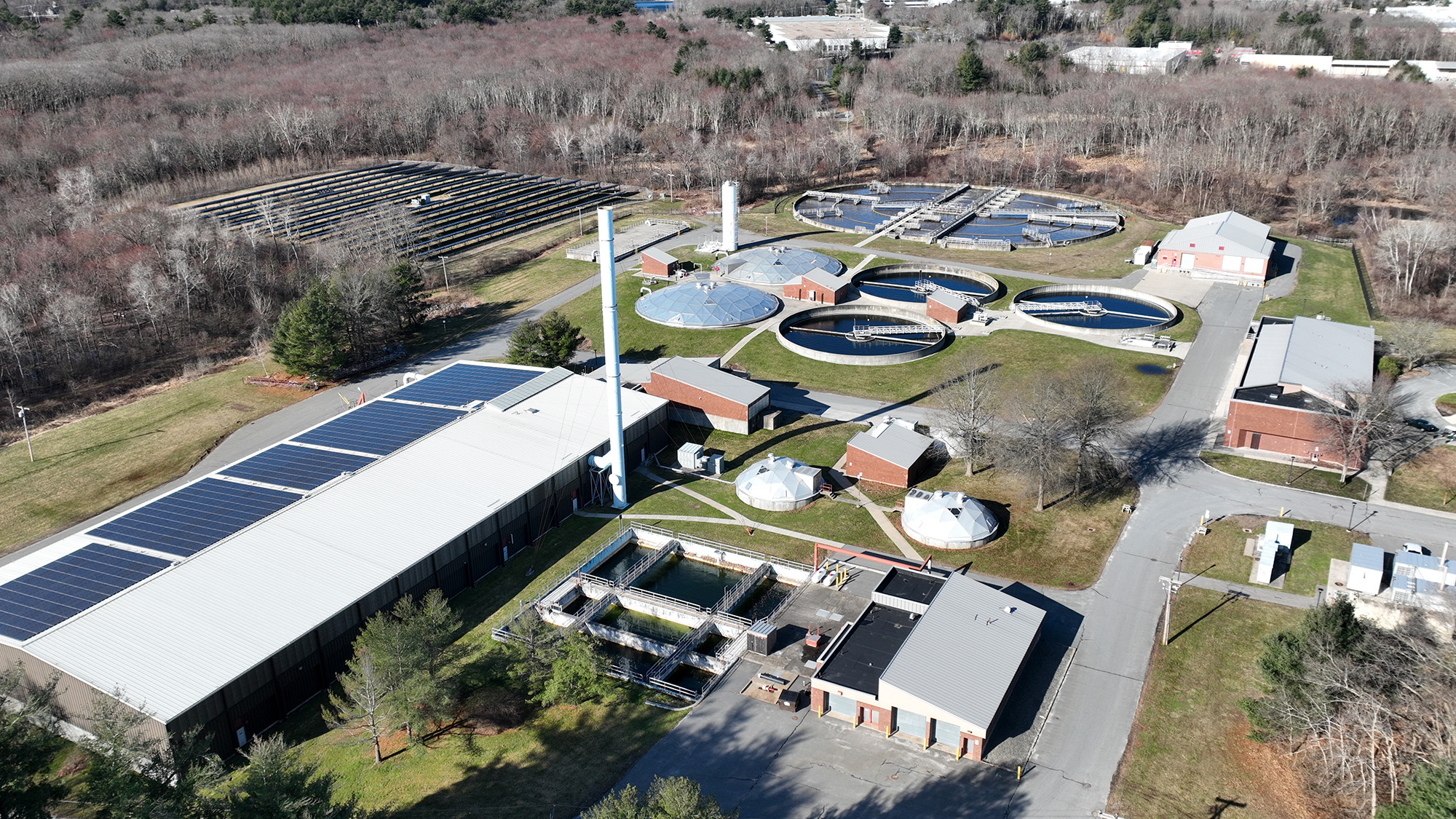
By Maureen Sullivan and Laura Hayes
WESTBOROUGH – As local communities try to accommodate more housing and commercial development, a major component could impact present and future plans.
The town of Westborough is currently assessing its ability to keep up with both existing and future sewer demand. Existing demand consists of actual daily flow combined with “promised” capacity in the form of sewer credits.
The town recently completed an inventory of every commercial property in town to see what has been promised in order to assess what future capacity is available.
This data, compiled by Town Engineer Lisa Allain, has been supplied to an infrastructure consulting firm, AECOMM, to make recommendations on a path forward.
The Westborough Wastewater Treatment Plant (WWTP) is at 238 Turnpike Road. It has a design flow of 7.68 million gallons per day (mgd) that is shared by Westborough, Shrewsbury and Hopkinton.
According to the treatment plant, the average daily flow for Westborough is 2.27 mgd; for Shrewsbury, it’s 3.69 mgd; and for Hopkinton, it’s 0.32 mgd.
The daily flow limit, per the Intermunicipal Agreement, is 2.89 mgd for Westborough; 4.39 mgd for Shrewsbury; and 0.40 for Hopkinton.
On paper, that leaves about 620,000 gallons per day for Westborough; however, that number cannot be verified until an assessment of the promised capacity is complete.
“That is what we’re trying to figure out,” said DPW Director Chris Payant. “We’re not at our limit. We need to reassess what capacity is still available.”
By the end of June, he said, “We’ll have a product that we’ll be circulating to committees” — including the Select Board — to determine how to use that data.
“This isn’t unique to Westborough — it’s a real problem” across the state, he added.
In light of MBTA communities being required to zone for multi-family housing, the topic of sewer capacity and other infrastructure issues came up during Corridor 9/495 Regional Chamber of Commerce’s legislative breakfast on March 28.
Rep. Meghan Kilcoyne said water is a “huge barrier” to the ability to quickly develop housing. She said the Legislature would be looking to see if there would be a way to connect municipalities and communities to more access to water, though she added that she didn’t know what that would look like.
“I think, to your point, water and sewer is going to be something that we’re going to have to do,” Kilcoyne said.
Boylston, she said, is “tapped out” in regards to its well system, as is Sterling, and they are looking for creative ways to get water to be able to build the needed housing stock.
“I think all of us in the Legislature … we certainly recognize some of the infrastructure challenges that many of these communities face, especially outside of [Route 128] when we get out into Central Mass. and MetroWest out here,” Kilcoyne said.
Discussion of a sewer moratorium
According to Payant, there is no official “sewer moratorium” in place in Westborough. However, once the consultant presents a report based on the data, his department could draft a regulation to provide interim guidance that could lead to a sewer moratorium.
Discussion of sewer issues has come up at various meetings recently. At issue is the impact on increased housing and commercial development should the town run short of capacity.
RELATED CONTENT: Sewer capacity a concern in Westborough BJ’s site redevelopment plan
“Sewer’s the main issue to more housing,” said Mark Silverberg, chair of the Planning Board, during the Advisory Finance Committee meeting on March 11.
Sewer usage 101
Sewer/wastewater is managed by permits issued by the town.
The DPW draws permits from the appropriate “buckets” for residential development, commercial development and industrial development.
Site plan review, including impact to utilities and review for sewer, is conducted by the Planning Board.
The project application is ultimately decided by the Select Board.
Sewer flow is measured daily. If a site is allocated 100 gallons per day, and uses 50 gallons, the site is still allocated for 100 gallons; that allocation stays with the property when it changes hands.
The report on sewer flow was first developed in the early 2000s, with a “final report” in 2012.
“It’s time to update the plan — look at your needs, come up with some options,” said Payant. “The town’s grown, but the limit hasn’t changed.”
“There are opportunities [for development], but we’re constrained,” he added.
About the plant
The WWTP is located adjacent to Westmeadow Plaza.
The WWTP handles wastewater flows from Westborough and Shrewsbury, as well as some flows from Hopkinton under an intermunicipal agreement.
The plant is governed by a board — three members from Westborough, three from Shrewsbury – appointed by the respective select boards.
Under the intermunicipal agreement, Westborough is to front the cost for operations and capital improvement with Shrewsbury reimbursing Westborough on a semiannual basis based on the percentage of flow.
Once the wastewater is treated, the plant sends the water into the Assabet River. The Westborough DPW is working on a feasibility study to try and direct some of that water back to town, and recharge its aquifers.
In another project, the DPW is working with the National Water Main Cleaning Co. on lining sewer pipes in the areas of School, Cross and West Main streets into early April. There will also be night work on West Main Street during this period.
The work will help reduce leakage within the pipes.
According to Payant, the Select Board will be discussing sewer at an upcoming meeting.

















